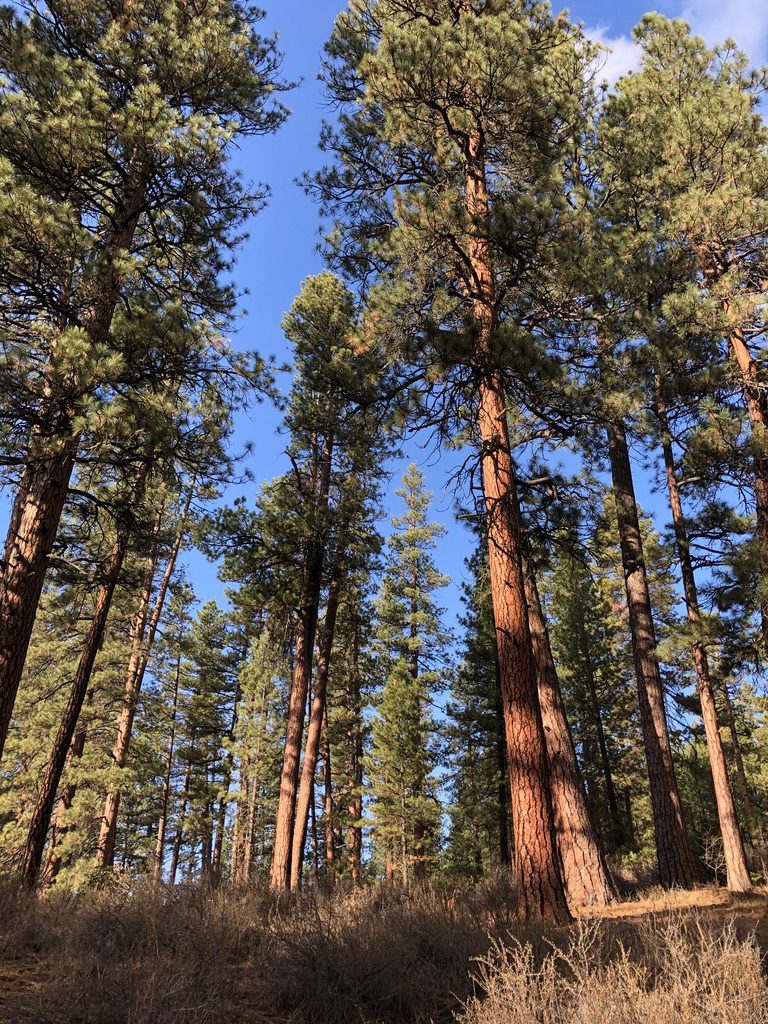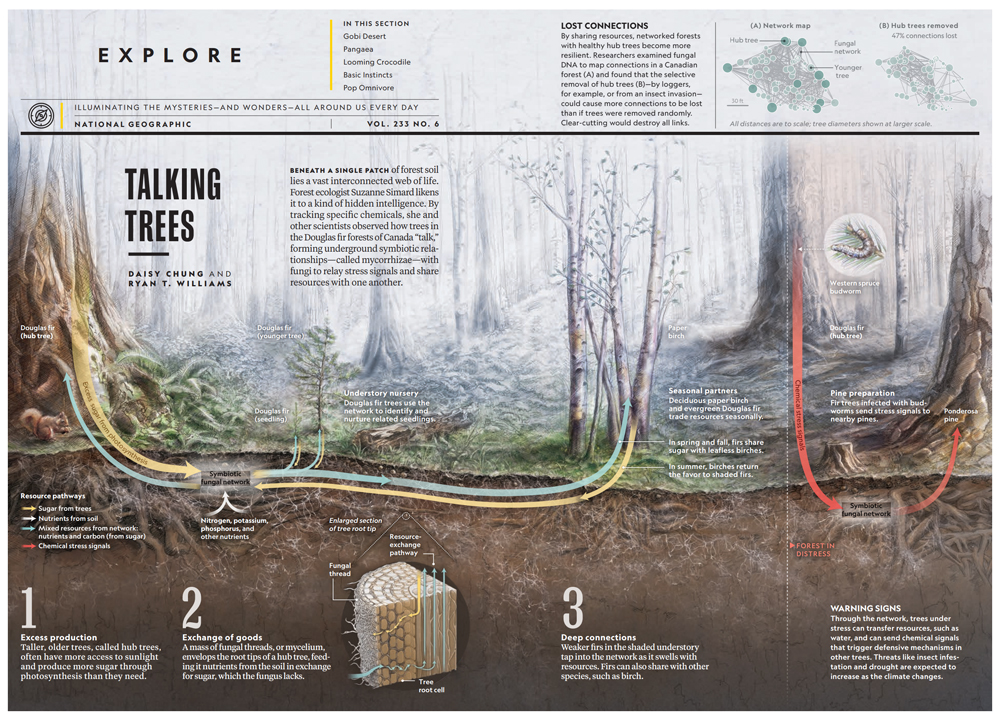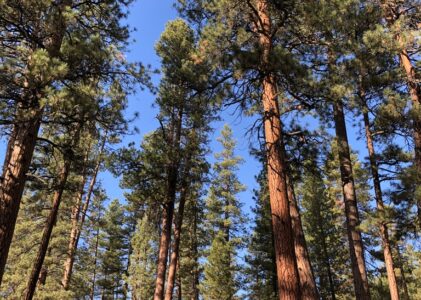“The forest is wired for wisdom, sentience, and healing“
— Suzanne Simard
Forests are best understood as being single organisms linked together by vast biological networks that allow trees to interact and communicate with an intricate and graceful wisdom. In partnership with underground fungal networks, trees share carbon, essential nutrients and water and warn each other of threats. And, like animals, they have learned to care for their progeny.
Those who manage our public lands fail to acknowledge the importance and complexity of these interactions. Instead, forests are treated as a collection of inanimate resources that can and must be domesticated to meet what the U.S. Forest Service terms “desired future conditions.”

Dr. Suzanne Simard and her colleagues at the University of British Columbia have been responsible in recent decades for enlarging our understanding of forests. Their research suggests that the pattern of fungal connections in a forest resemble the neural network of animal brains, allowing for choice, learning and memory on an ecosystem scale. Wisdom thus can be seen as inherent to all life, not something confined to the human brain.
Her TED talk is a good introduction to the current science and this interview goes into some fascinating detail.

This National Geographic illustration Intelligent Forest puts these findings in visual terms
This is a summary of what is known to date.
The timber industry and their supporters can no longer lay claim to ‘wise use’, the fallacy that increasingly efficient consumption of natural resources can continue indefinitely. Ecological understanding is showing that forests, as complex adaptive systems, have enduring and intrinsically wise strategies for long-term survival. Wisdom is thus properly seen in the flourishing of nature, not as an exclusive human privilege or artifact. This shift in consciousness is as significant as the finding centuries ago that the sun was the center of the solar system, not a human ruled earth.
A new awareness is spreading through present-day social networks much like the ancient way information is shared between trees through fungal networks. It is being explored by popular authors and filmmakers like Richard Powers, James Cameron and David Abram; even the enlightened German forester Peter Wohlleben.
Forests sense their surroundings, communicate and share the means of life between species. They are cooperative networks rather than the competitive hierarchies. Life is no longer static and individual but connected and collectively sentient. With this understanding one can no longer look at a tree without the awareness that the tree is taking its measure of you in return.
